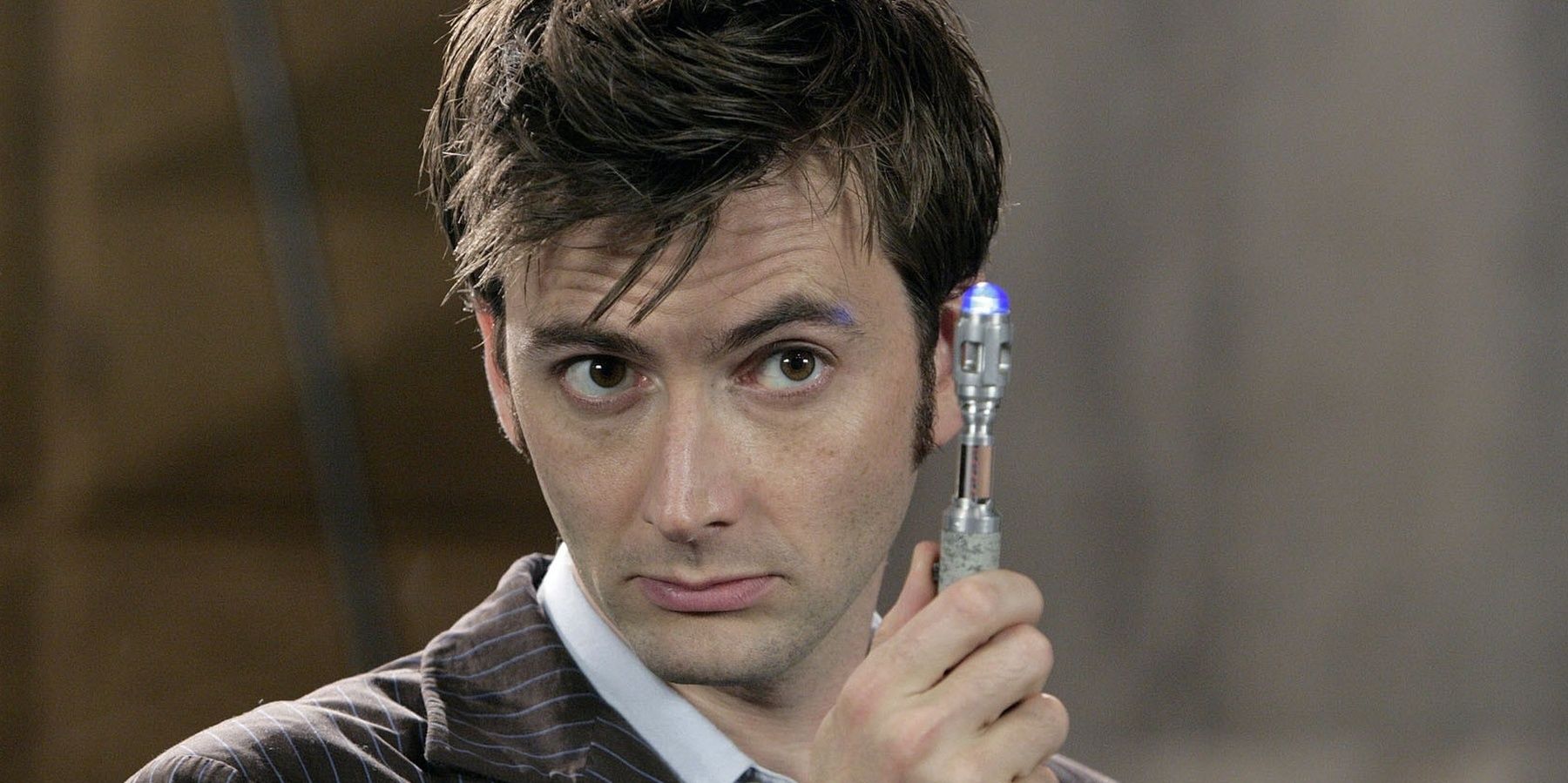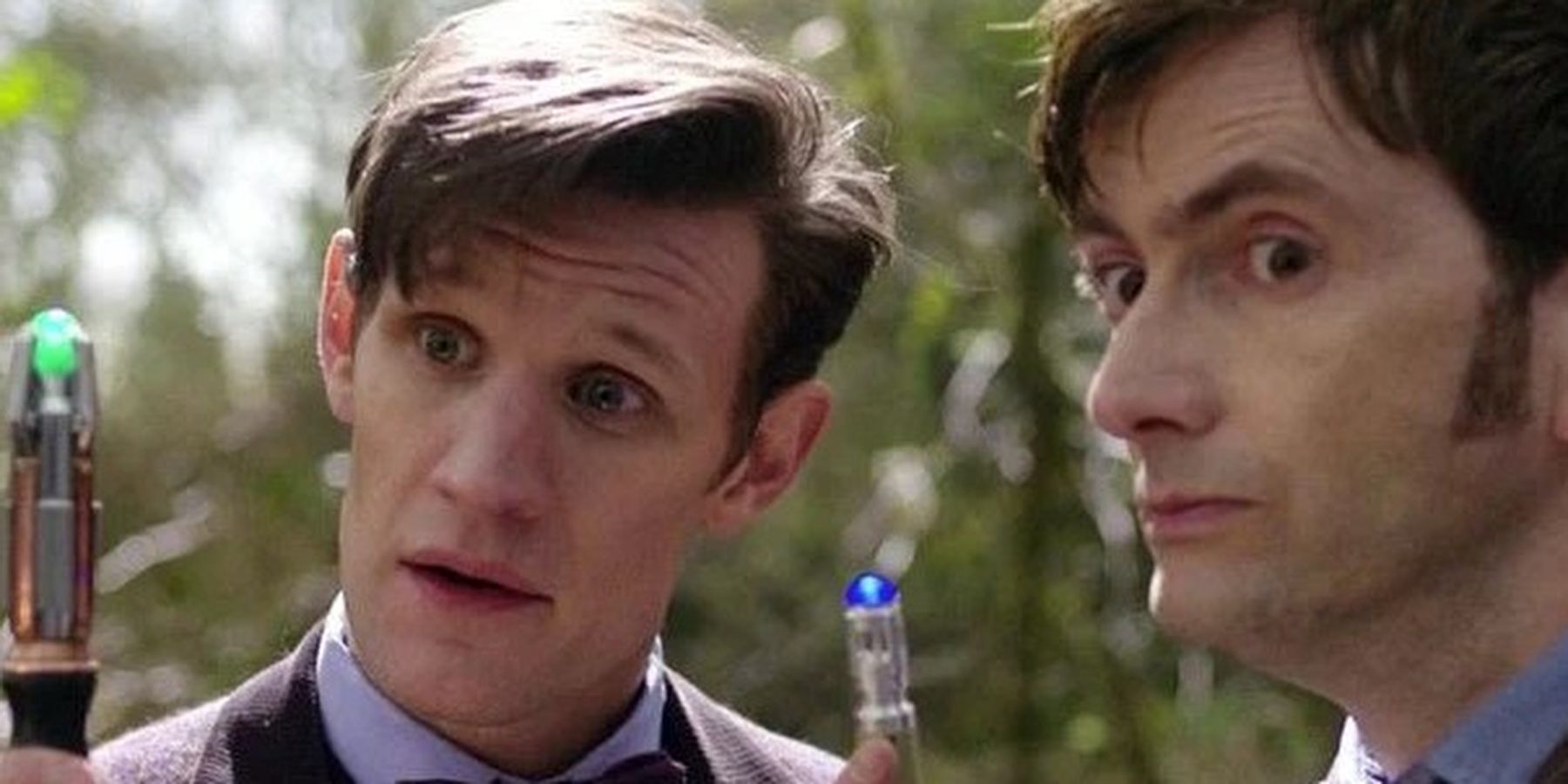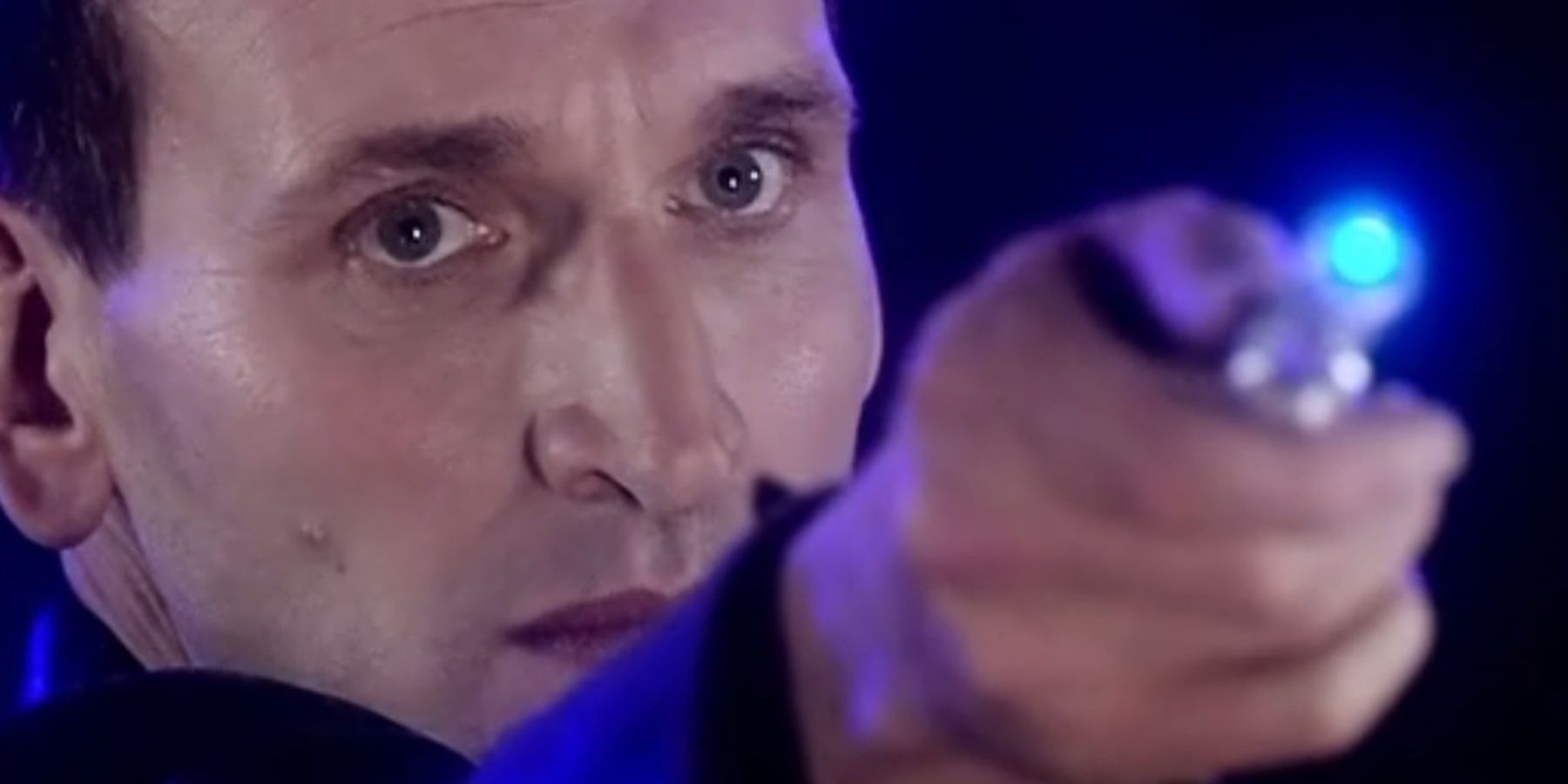If Doctor Who fans were asked to name icons from the series, most would probably name three things: The TARDIS, Daleks, and the Sonic Screwdriver. The Doctor's iconic all-purpose tool is a must-have for cosplayers and collectors alike, but many newer fans may not know that the Sonic Screwdriver hasn't always been a part of the show's history. How did the Sonic Screwdriver come to be, and how did it rise to such prominence in Doctor Who?
Doctor Who began broadcasting on the BBC in 1963, with William Hartnell taking the role of The Doctor and the iconic TARDIS already in place. However, the Sonic Screwdriver didn't make its first appearance in the show's first season. In fact, it didn't appear onscreen until Patrick Troughton had taken up the mantle of The Second Doctor.
In The Classic Series
The first appearance of the handy gadget was in 1968 in the episode "Fury from the Deep." In the episode, the tool used sonic waves to disrupt and dismantle things as well as essentially pick locks. Initially, the Sonic was only meant to be a one-time tool, but it popped up a few more times during the Second Doctor's run, including once being used as a welding torch. When it made its first appearance, the Sonic resembled a pen light: a simple, smooth metal cylinder with no embellishments or extensions like in later versions.
During the era of the Third Doctor, Jon Pertwee, the show's producers at the time worried that the Sonic Screwdriver could be used as a get-out clause for most situations, and so aimed to reduce the device's appearance in the show. It did appear in the episode "The Sea Devils", in which it was used to detonate mines. However, the Sonic looked very different in its next appearance, during "The Three Doctors." Instead of the sleek cylinder, the Sonic now was bulkier, with a red spherical head. This turned out to be a one-time prop, as the original Sonic had been lost during production. Due to episodes being filmed in a different order than that in which they aired, the original Sonic appeared once more in the episode "Carnival," before changing permanently.
During the tenure of the Fourth Doctor (Tom Baker), those in charge wanted to diminish the Sonic Screwdriver's role even further. There was a great worry behind the scenes that having access to the device would lead to lazier writing and fewer options for story resolutions. However, when new producer Graham Williams took over in 1977, he decided to bring back the Sonic. It was at this point that the tool started to become the constant tech companion to The Doctor that audiences know today.
Between seasons 15 and 19, the Sonic came to further prevalence with The Doctor expressing more and more fondness for the device. When Time Lady Romana constructed her own version of the Sonic Screwdriver, the Doctor was even jealous of the design of her gadget and tried to swap Sonics with her. By the time the Fifth Doctor (Peter Davison) came onto the scene, the Sonic was on its way out again, and was written out of the show in season 19 after being destroyed in the episode "The Visitation." The Fifth Doctor had no Sonic after that and, in fact, the Sonic made no further appearances in the classic series of the show, although it did return for the Doctor Who TV movie and Paul McGann's Eighth Doctor.
In The Revival
When the show was revived in 2005, Christopher Eccleston's Ninth Doctor came back with a newly redesigned Sonic Screwdriver in hand. Now, the device had a blue light and a sound effect accompanying its use. With the redesign came a whole new life for the tool which now became much more prevalent, appearing in almost every episode and boasting an expanded repertoire of tricks up its sleeve.
In the revived series, the Sonic became a whole new facet of the show, slowly becoming synonymous with the Doctor himself. As the series has gone on, the design of the Sonic has become linked to the regeneration of The Doctor. When David Tennant's Tenth Doctor regenerated into Matt Smith's Eleventh Doctor, the Sonic changed along with him. In "The Eleventh Hour", the Sonic is destroyed, and a new one is produced from the console of the TARDIS, complete with a new look.
Eleven's new Sonic is bigger than the previous version, with a green light and telescopic metal claws. However, Eleven had pretty bad luck with his Sonic Screwdriver, frequently breaking it, losing it, or letting it get destroyed.
With Peter Capaldi's Twelfth Doctor came another Sonic redesign. In the episode "Hell Bent," the TARDIS produces a new Sonic Screwdriver once again. This time the gadget has a blue shaft with highlights of gold and silver. It's a much bulkier and more steampunk-influenced design and continues the trend of the screwdriver getting more and more flashy. Twelve was the only Doctor seen to willingly give up his Sonic, presenting it to River Song before the expedition that would lead to her death. At one point, the Twelfth Doctor donned Sonic Sunglasses instead of carrying the Screwdriver, stating that they don't "spoil the line of your jacket." The sunglasses had all the functionality of the regular tool but with some added bonus features. Wearing them could erase any alien encoding in someone's brain, transmit information directly into The Doctor's brain, and communicate with Gallifreyan ships.
With Jodie Whittaker's Thirteenth Doctor, the design changed again, but the providence of the companion device was different this time. Instead of the TARDIS providing a new version, Thirteen is seen constructing her new Sonic from scrap and a glowing orange component from an alien space capsule. Her Sonic glows orange through the whole body of the device.
With the announcement of Ncuti Gatwa as the Fourteenth Doctor, audiences are sure to be seeing another new Sonic Screwdriver along with the regeneration of the Time Lord. How the device will change remains to be seen, but it certainly doesn't seem to be going anywhere in the near future.



